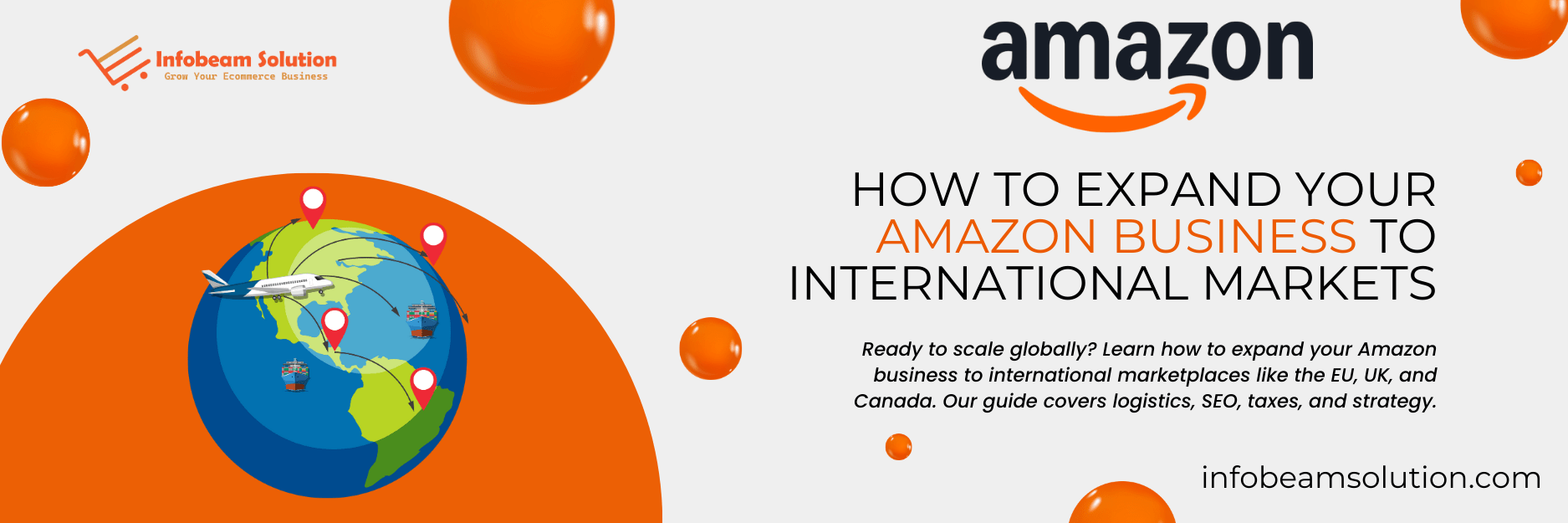How to Expand Your Amazon Business to International Markets
You’ve mastered your home marketplace, your sales are steady, and you’re ready for the next big challenge. Expanding your Amazon business internationally isn’t just a growth strategy, it’s a survival tactic in an increasingly connected global economy. Tapping into markets in Europe, the UK, Canada, and beyond can diversify your revenue, reduce seasonal slumps, and dramatically increase your brand’s reach.

But where do you start? The process involves more than just translating your listings. This complete guide will walk you through the strategic, logistical, and operational steps to successfully expand your Amazon empire across borders.
Table of contents
- How to Expand Your Amazon Business to International Markets
- Why You Should Consider International Expansion
- Step 1: Choose the Right International Marketplace
- Step 2: Understand the Logistics: FBA vs. FBM
- Step 3: Adapt Your Listings for a Global Audience
- Step 4: Navigate Legal, Tax, and Compliance Hurdles
- Step 5: Manage Your International Presence
- A Strategic Alternative: The Hybrid Approach
- Conclusion: Think Globally, Act Strategically
- Related Posts
Why You Should Consider International Expansion
- Massive New Customer Base: Access to hundreds of millions of new potential customers outside your domestic market.
- Diversify Your Revenue Streams: Reduce reliance on a single economy. When sales dip in one country, they can be booming in another.
- First-Mover Advantage: Be the first to launch your product category in an emerging marketplace.
- Extended Product Lifecycle: Products that are mature in your home market can be introduced as new and innovative elsewhere.
Step 1: Choose the Right International Marketplace
Don’t try to conquer every market at once. Research is key. Amazon makes it easier through programs like Amazon Global Selling.
- Amazon Europe (ESEU): A huge opportunity, but complex due to varying languages and regulations. The UK, Germany, and France are often the first stops.
- Amazon Canada: A logical first step for US sellers due to geographic and cultural proximity.
- Amazon Australia: A growing market with less competition than North America or Europe.
- Amazon Japan & UAE: Lucrative but require a deep understanding of local consumer behavior.
Consider: Market size, competition level, logistics cost, language barriers, and cultural fit for your products.
Step 2: Understand the Logistics: FBA vs. FBM
How will you get your inventory to customers?
- Fulfillment by Amazon (FBA) Programs:
- Pan-European FBA: You send your inventory to one Amazon FC in Europe (e.g., Germany), and Amazon distributes it across its EU network. This is incredibly efficient but requires VAT registration in multiple countries.
- European Fulfillment Network (EFN): You fulfill orders from your home country’s FC. Slower shipping but simpler to start; you only need VAT in your home country.
- North America Remote Fulfillment: For US sellers, this allows you to fulfill orders in Canada and Mexico from your US FBA inventory.
- Fulfillment by Merchant (FBM): You handle international shipping yourself. This offers more control but is complex and often slower for the customer.
Pro Tip: Amazon Global Logistics (AGL) can simplify the entire process of shipping your inventory from your manufacturer to overseas fulfillment centers, handling customs and freight.
Step 3: Adapt Your Listings for a Global Audience
A direct translation won’t cut it. You need localization.
- Language & Translation: Professionally translate your titles, bullet points, descriptions, and backend keywords. Avoid automated tools for critical copy.
- Cultural Relevance: Adapt your imagery and messaging to resonate with local cultures and trends.
- Local SEO: Research and implement keywords that customers in that specific country use to search. A “cell phone” in the US is a “mobile phone” in the UK.
- Pricing Strategy: Price competitively for the local market. Factor in currency exchange, VAT, and higher logistics costs.
Step 4: Navigate Legal, Tax, and Compliance Hurdles
This is the most complex but critical step.
- VAT Registration (For Europe): If you use Pan-European FBA, you must register for VAT in each country where your inventory is stored. Services like Amazon VAT Services can help.
- Product Compliance: Ensure your products meet all local safety, labeling, and certification standards (e.g., CE marking in the EU).
- Tax Obligations: Understand your tax responsibilities in the target country. For example, US sellers may need to provide a W-8BEN form.
Step 5: Manage Your International Presence
- Unified Account: Use Amazon’s Unified Account feature to manage all your European marketplaces from a single Seller Central interface.
- Currency Management: Use tools to handle multiple currencies and mitigate exchange rate risks.
- Customer Service: Be prepared to handle customer inquiries in the local language and within local time zones.
A Strategic Alternative: The Hybrid Approach
Not ready for a full-scale launch? Test the waters with a hybrid model:
- Start with FBM or EFN to validate demand without a large inventory investment.
- Once a product proves successful, switch to FBA in that country for faster delivery and better ranking.
Conclusion: Think Globally, Act Strategically
International expansion is a marathon, not a sprint. It requires meticulous planning, patience, and a willingness to adapt. The brands that succeed are those that treat each new marketplace as a unique business opportunity, not just a copy-paste of their domestic strategy.
By choosing the right market, mastering the logistics, localizing your content, and ensuring compliance, you can unlock a new era of growth for your Amazon business.
Feeling overwhelmed by VAT, international SEO, and global logistics? You don’t have to do it alone. InfoBeam Solution’s experts can manage your entire international expansion strategy, from marketplace onboarding to daily operations.
Schedule a Free Global Expansion Consultation Today! Call us: +91 96545 53640 or email sales@infobeamsolution.com.